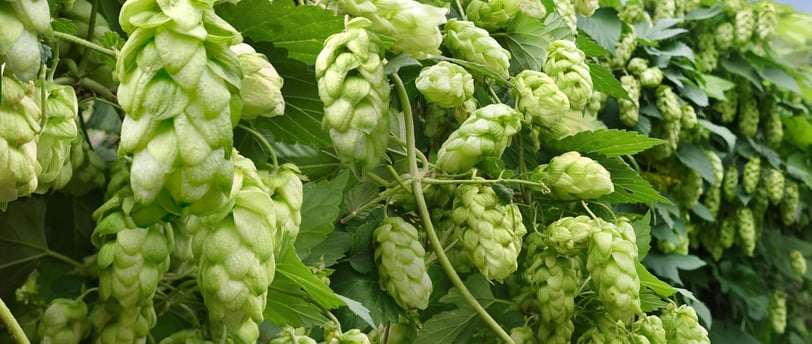Dry Hopping: The Art and Science of Aroma Extraction in Beer
Dry hopping is a key technique for enhancing beer aromas, transforming the flavor and sensory experience of the brew. In this post, we’ll explore how this technique can be effectively applied, including the impact of biotransformations during fermentation and the different dry hopping methods. With fresh hops adapted to the Brazilian climate, Greenest enhances dry hopping, offering vibrant and fresh aromas to create unique beers. We’ll also discuss challenges like oxidation and hop creep, and how to manage them to achieve perfect results.
5/4/20252 min read


Dry hopping is a powerful — and increasingly sophisticated — technique that turns good beers into memorable experiences. It is both a sensory art and a precise science. In this article, we gather advanced practices used by professional brewers around the world to extract the maximum aroma with minimal loss.
With fresh hops adapted to the Brazilian terroir, Greenest enhances these techniques even further. Our product, locally harvested and with multiple harvests per year, delivers more vibrant and abundant aromatic compounds, ideal for modern, expressive beers with identity.
Biotransformations: The Synergy Between Hops and Yeast
One of the most fascinating frontiers of dry hopping is biotransformation — the reaction between hop compounds and active yeast during fermentation.
When done at the right moment (usually mid-fermentation), dry hopping stimulates enzymatic reactions that modify thiols and terpene precursors, revealing previously hidden aromas. It is at this point that unexpected notes of tropical fruits, intense citrus, and refined esters emerge.
Greenest hops, fresh and rich in volatile thiols, respond excellently to this interaction, especially in hazy IPAs, NEIPAs, and aromatic Pale Ales.
Dry Hopping in Active Fermentation vs. Post-Fermentation
Active Fermentation:
Pros: promotes biotransformations; lower oxidation risk (active CO₂).
Cons: higher aroma loss with CO₂ release; hop creep may be more intense.
Post-Fermentation:
Pros: preserves original hop aromas; greater control over sensory profile.
Cons: higher oxidation risk; requires extra care with purging and temperature.
The decision between one or the other depends on the style, desired profile, and the type of hop used. The freshness and quality of Greenest hops ensure aromatic intensity in both scenarios — with an extra benefit when combined with biotransformation.
Static Contact vs. Hop Recirculation: Which Method is Best?
Static Contact:
Classic technique, with lower operational complexity.
Ideal for smaller tanks or experimental batches.
Relies heavily on hop quality and contact duration (3 to 7 days).
Hop Recirculation (Hop Cannon / Hop Gun):
Promotes more efficient extraction with less hop usage.
Reduces contact time and losses through adsorption.
Requires specific equipment but ensures standardization.
Recirculating with fresh hops can accelerate the extraction of essential oils, delivering incredible results in reduced time — a strategic advantage when working with Greenest ingredients, which arrive fresher to the tank.
Managing Oxidation and the Hop Creep Challenge
Two silent villains in dry hopping:
Oxidation: cardboard aroma, altered color, compromised shelf life.
→ Use CO₂ to purge tanks and avoid contact with air at all costs.
Hop Creep: unexpected re-fermentation caused by natural enzymes in hops.
→ Monitor final gravity rigorously after dry hopping; consider pasteurization or centrifugation if necessary.
At Greenest, we conduct a rigorous curing and analysis process to reduce unwanted enzymatic activity, making hop creep more predictable and manageable.
Greenest's Conclusion: Maximum Aromatic Expression with Brazilian Hops
High-level dry hopping requires technique, timing, and above all, top-quality ingredients. With Greenest's fresh hops, developed for tropical palates and delivered with unparalleled quality, your beer gains depth, identity, and a sensory edge.
We are here to offer not just hops — but results in the glass. Contact us to learn about our varieties and receive complete technical support to enhance your dry hopping with Brazilian excellence.
